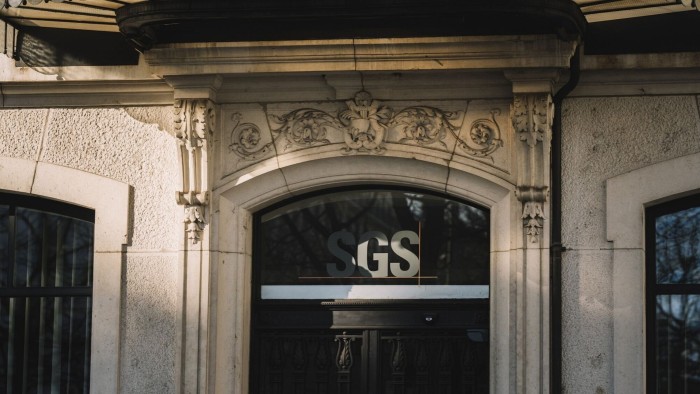Unlock the Editor’s Digest for free
Roula Khalaf, Editor of the FT, selects her favourite stories in this weekly newsletter.
In most sectors, big is most definitely better. Corporate behemoths are more profitable, have stronger brands, can more easily attract talent and build capabilities, and tend to take share from minnows. The business of auditing financial accounts, by way of example, is largely concentrated among the Big Four.
Not so the business of auditing real-world stuff — a roughly €150bn market that involves inspecting beaches for cleanliness, testing products for quality, and certifying processes for compliance. The top 10 companies only hold about a quarter of the market according to Karl Green at RBC Capital. A potential €32bn tie-up between two of its leading players — Switzerland’s SGS and France’s Bureau Veritas — has gone down like an adulterated yoghurt, with the combined market capitalisation dipping on Wednesday.
That reflects the specifics of this sector, which deals in the rich tapestry of the physical world. Sums, spreadsheets and — to a large extent — accounting standards are universal. Work can be optimised to increase efficiency. But a unit that sends out marine experts with clipboards to inspect ships, for instance, cannot easily take on a job inspecting clothing for residue chemicals.
While there would be room to slim down corporate overheads, that’s unlikely to be transformative. This limits the possibility of SGS — the larger business with a SFr16.4bn (€17.5bn) market capitalisation — paying much of a premium for Bureau Veritas without destroying value.
Market share gains, too, may prove elusive. The cost of testing, inspection and certification (TIC) is relatively small. That does not give clients much of an incentive to shop around, which makes for sticky relationships with existing suppliers.
For the inspectors, a merger makes most sense as a defensive move. The TIC market will at some point need to transform to keep up with the world around it. Human testers will, over time, be replaced by sensors and drones. Artificial intelligence can help create product prototypes, which can then be put through their paces on laptops rather than in labs. That will require a cycle of capital investment better shared than borne alone.
On top of that, the market for TIC services isn’t looking quite as hot as it was. Secular drivers of demand include economic growth, increasing regulation and international trade. That squares poorly with President-elect Donald Trump’s desire to impose tariffs and his dislike of clean energy pledges and red tape.
That a bigger entity could better withstand heavy investments and lumpier demand makes intuitive sense. But if the test is one of appealing to investors, this putative union could struggle to scrape through.
Read the full article here

